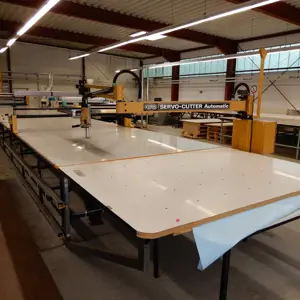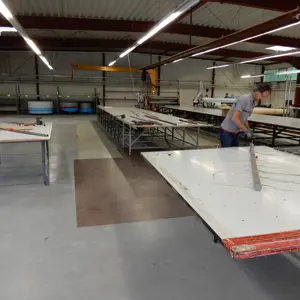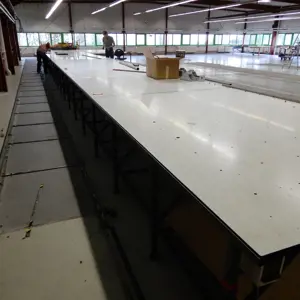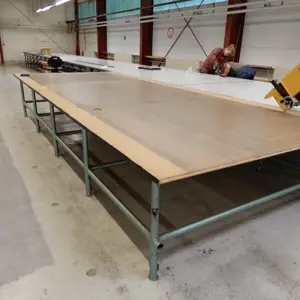Textile
A selection of used textile machines such as looms, spinning machines, knitting machines, dyeing vats, and sewing machines for all standard textile processing methods. These machines are suitable for the industrial production, processing, and finishing of fabrics, yarns, and textiles in large quantities.
9 Positions
Refresh in 15s

Auction
#14527-215
5-thread overlock Kingtex SH 6000
11-100 Lidzbark Warminski, Klebowo 80 (Poland)
09. Jan 2026, 10:00 AM
85 €

Auction
#14527-219
5 Tables for sewing machines, 5 pcs
11-100 Lidzbark Warminski, Klebowo 80 (Poland)
09. Jan 2026, 10:01 AM
180 €

Auction
#14527-220
4 Spreading tables, 4 pcs
11-100 Lidzbark Warminski, Klebowo 80 (Poland)
09. Jan 2026, 10:01 AM
190 €

Auction
#14527-221
Fabric stand
11-100 Lidzbark Warminski, Klebowo 80 (Poland)
09. Jan 2026, 10:02 AM
20 €
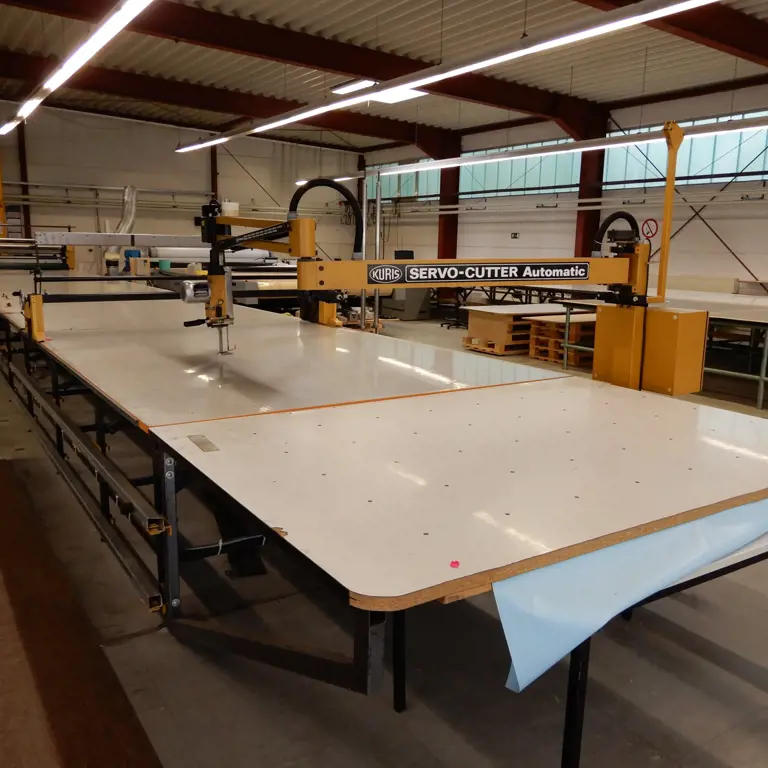
Auction
#19172-1
Servo cutter Kuris
Industriestraße 18, 18246 Bützow
09. Jan 2026, 3:00 PM
8.000 €

Auction
#19172-2
Servo cutter Gerber
Industriestraße 18, 18246 Bützow
09. Jan 2026, 3:01 PM
20.000 €

Auction
#19172-3
Table (1)
Industriestraße 18, 18246 Bützow
09. Jan 2026, 3:02 PM
100 €
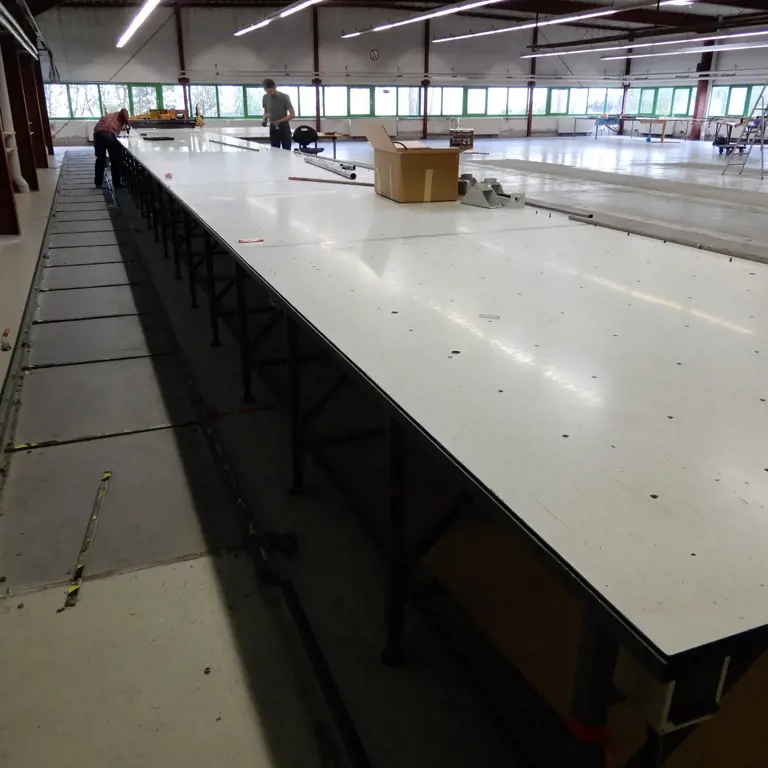
Auction
#19172-4
Table (2)
Industriestraße 18, 18246 Bützow
09. Jan 2026, 3:03 PM
150 €

Auction
#19172-5
Table (3)
Industriestraße 18, 18246 Bützow
09. Jan 2026, 3:04 PM
50 €
Buy used textile machines on NetBid
In the textile industry, there is a suitable used machine for every process. We offer you a continuously updated range of used textile machines at attractive prices.
What are textile machines?
Textile machines are indispensable for producing a wide variety of textiles. They are used to weave, spin, dye, cut and sew fabrics. There are different types of textile machines, depending on the purpose they are intended to fulfill. Some examples are looms, knitting machines, spinning machines, dyeing basins and sewing machines.
Loom
A loom is a traditional textile machine designed to produce fabric. It consists of a frame on which threads are crossed horizontally and vertically to create a fabric. The loom can be operated manually or by machine and allows a variety of fabrics to be produced with different pattern and texture variations.
Looms have been used for thousands of years and have a long history in textile production. Today, they are still used in some traditional craft workshops and in the production of artisan fabrics, but modern looms are usually fully automated machines designed for large quantities of fabric and high-quality products.
Spinning machine
A spinning machine processes raw fiber materials into yarn. This machine twists and turns the fibers to create a stronger thread. The fibers can be made of cotton, wool, silk or synthetic materials.
There are different types of spinning machines that are designed for different types of fibers and manufacturing processes. Most modern spinning machines are fully automated and can produce large quantities of yarn quickly and efficiently.
Spinning machines are an important part of the textile industry and are used for the production of clothing, home textiles, technical textiles and other types of fabric. The use of spinning machines has revolutionized textile production and makes it possible to produce yarn in large quantities and high quality.
Knitting machine
A knitting machine produces fabrics by knitting yarns or threads. They can be either manual or computerized and can be programmed to produce different patterns and textures. They are capable of producing fabrics in large quantities quickly and cost-effectively.
Dyeing tanks
A dyeing basin has proven its worth for dyeing fabrics and yarns. It consists of a basin in which the dye and the material to be dyed are mixed under controlled conditions. The use depends on the specific requirements of the dyeing process, but typically the material is placed in the tank, the dye is added and then immersed under heat and agitation for a certain period of time.
Sewing machine
A sewing machine is required to sew fabric and produce or repair garments, home textiles and other items. It has a needle, a thread holder and a needle plate that feed a thread through the fabric to form a seam. Sewing machines can be manual or computerized and come in a variety of sizes, types and functions.
These are just a few examples, there are many other types of textile machines that differ depending on the application and production process.




